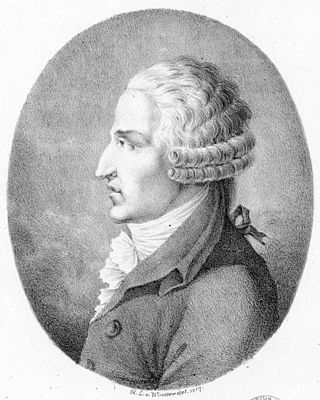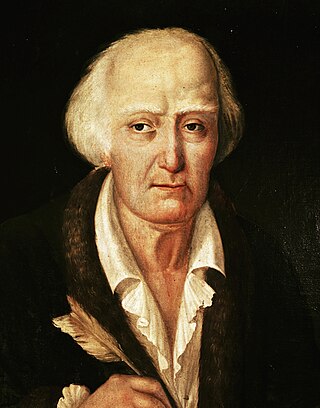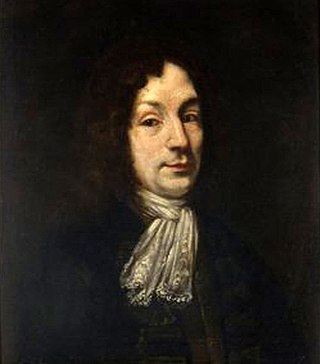

Li Eventi di Filandro Et Edessa is an opera by Marco Uccellini based on a libretto by Gaddo Gaddi. [1] [2] It was first performed at the Teatro del Collegio dei Nobili in Parma in 1675. [3] [4]


Li Eventi di Filandro Et Edessa is an opera by Marco Uccellini based on a libretto by Gaddo Gaddi. [1] [2] It was first performed at the Teatro del Collegio dei Nobili in Parma in 1675. [3] [4]
Creonte, king of Egypt is at war with Artaserse, King of Persia, but Artaserse’s son prince Laoconte is in love with Edessa, daughter of Creonte. Laoconte sends his trusted friend Filandro of Lydia to Edessa, but he then falls in love with her himself. Edessa in turn falls in love with him; she escapes from court and attempts to flee with him to Lydia but they are shipwrecked and seized by pirates. Eventually they return to Egypt where they live in hiding. Laoconte comes to Egypt to press his own suit but Creonte imprisons him, whereupon the Persians invade and conquer Egypt. [2]
Although the libretto has survived, Uccellini’s score has not. [5]
Carlo Andrea Clerici (Creonte), Carlo Antonio Riccardi (Odelinda), Francesco Castelli (Edessa), Giovanni Battista Pezzali (Eumene/Filandro), Pauolo Castelli (Laoconte), Giorgio Martinelli (Arsace), Francesco Folchi (Aristone), Giovanni Matteo Gentilini (Attamone), Francesco Orsi (Cleante), Federico Sudari (Mirtesia), Francesco Bardi (Stasiclea), Pauolo Pasquale (Chino), Stefano Odoardi (Idragorre). [3]

Giuseppe Felice Romani was an Italian poet and scholar of literature and mythology who wrote many librettos for the opera composers Donizetti and Bellini. Romani was considered the finest Italian librettist between Metastasio and Boito.

Giuseppe Gazzaniga was a member of the Neapolitan school of opera composers. He composed fifty-one operas and is considered to be one of the last Italian opera buffa composers.

Pasquale Anfossi was an Italian opera composer. Born in Taggia, Liguria, he studied with Niccolò Piccinni and Antonio Sacchini, and worked mainly in London, Venice and Rome.
Marco Uccellini was an Italian Baroque violinist and composer. His output of mainly secular music for solo violin is considered to have been important in the rise of independent instrumental classical music, and in the development of violin technique.

Francesco Feo was an Italian composer, known chiefly for his operas. He was born and died in Naples, where most of his operas were premièred.
Giuseppe Farinelli was an Italian composer active at the end of the 18th century and the beginning of the 19th century who excelled in writing opera buffas. Considered the successor and most successful imitator of Domenico Cimarosa, the greatest of his roughly 60 operas include I riti d'Efeso, La contadina bizzarra and Ginevra degli Almieri. More than 2/3 of his operas were produced between 1800-1810 at the height of his popularity. With the arrival of Gioachino Rossini his operas became less desirable with the public, and by 1817 his operas were no longer performed. His other compositions include 3 piano forte sonatas, 3 oratorios, 11 cantatas, 5 masses, 2 Te Deums, a Stabat mater, a Salve regina, a Tantum ergo, numerous motets, and several other sacred works.

Carlo Francesco Pollarolo was an Italian composer, organist, and music director. Known chiefly for his operas, he wrote a total of 85 of them as well as 13 oratorios. His compositional style was initially indebted to the opera tradition of Giovanni Legrenzi and Carlo Pallavicino, but he moved beyond this style with innovations to the compositional structure of the aria characterized by expanded forms and orchestral elaborations. His early work used three part strings in the Legrenzi and Pallacino tradition of orchestration, but his mid and later works had developed into a richer orchestration of five strings parts and expanded instrumentation of brass and woodwinds. He was the first Venetian opera composer and one of the earliest Italian composers to use the oboe in his opera orchestrations.

Arnoldo Foà was an Italian actor, voice actor, theatre director, singer and writer. He appeared in more than 130 films between 1938 and 2014.

Benedetto Pamphili was an Italian cardinal, patron of the arts and librettist for many composers.

Giuseppe Maria Orlandini was an Italian baroque composer particularly known for his more than 40 operas and intermezzos. Highly regarded by music historians of his day like Francesco Saverio Quadrio, Jean-Benjamin de La Borde and Charles Burney, Orlandini, along with Vivaldi, is considered one of the major creators of the new style of opera that dominated the second decade of the 18th century.
Gennaro Astarita was an Italian composer, mainly of operas. The place of his birth is unknown, although he was active in Naples for many years. He began his operatic career in 1765, collaborating with Niccolò Piccinni in the writing of the opera L'orfana insidiata. He became the maestro di cappella in Naples in 1770.
Marcello Bernardini was an Italian composer and librettist. Little is known of him, save that he wrote 37 operas in his career. His father was most likely the composer Rinaldo di Capua.

Giacomo Domenico Mario Antonio Pasquale Giuseppe Tritto was an Italian composer, known primarily for his fifty-four operas. He was born in Altamura, and studied in Naples; among his teachers were Nicola Fago, Girolamo Abos, and Pasquale Cafaro. Amongst his pupils were the young Vincenzo Bellini around 1821, plus Ferdinando Orlandi. He died in Naples.
Gaetano Monti was an Italian composer. His name is first recorded in 1758, when he was eight years old, singing in a small part in a performance of Il curioso del suo proprio danno by Niccolò Piccinni. His first opera, Adriano in Siria, was performed in Modena in 1775, and he was later named organist of the Treasury Chapel at Naples Cathedral; there he remained until 1788. Moreover, in 1776 he became an impresario at the Teatro San Carlo. Most of his works were opere buffe, and were seen in theatres in Rome, Venice, and Naples. His most popular works were Le donne vendicate and Lo studente. It was believed at one time that he was the brother of the poet Vincenzo Monti, but this is uncertain.

Antonio Cagnoni was an Italian composer. Primarily known for his twenty operas, his work is characterized by his use of leitmotifs and moderately dissonant harmonies. In addition to writing music for the stage, he composed a modest amount of sacred music, most notably a Requiem in 1888. He also contributed the third movement, Quid sum miser, to the Messa per Rossini, a collaborative work created by thirteen composers to honor Gioacchino Rossini.
Francesco Maria Bazzani or Bassani was an Italian baroque composer.

Luca Antonio Predieri was an Italian composer and violinist. A member of a prominent family of musicians, Predieri was born in Bologna and was active there from 1704. In 1737 he moved to Vienna, eventually becoming Kapellmeister to the imperial Habsburg court in 1741, a post he held for ten years. In 1765 he returned to his native city where he died two years later at the age of 78. A prolific opera composer, he was also known for his sacred music and oratorios. Although his operas were largely forgotten by the end of his own lifetime and most of their scores lost, individual arias as well some of his sacred music are still performed and recorded.

Sebastiano Biancardi, known by the pseudonym Domenico Lalli, was an Italian poet and librettist. Amongst the many libretti he produced, largely for the opera houses of Venice, were those for Vivaldi's Ottone in villa and Alessandro Scarlatti's Tigrane. A member of the Accademia degli Arcadi, he also wrote under his arcadian name "Ortanio". Lalli was born and raised in Naples as the adopted son of Fulvio Caracciolo but fled the city after being implicated in a bank fraud. After two years wandering about Italy in the company of Emanuele d'Astorga, he settled in Venice in 1710 and worked as the "house poet" of the Grimani family's theatres for the rest of his career. In addition to his stage works, Lalli published several volumes of poetry and a collection of biographies of the kings of Naples. He died in Venice at the age of 62.

Artaserse is an opera in three acts composed by Johann Adolph Hasse to an Italian libretto adapted from that by Metastasio by Giovanni Boldini first shown in Venice on 11 February 1730.